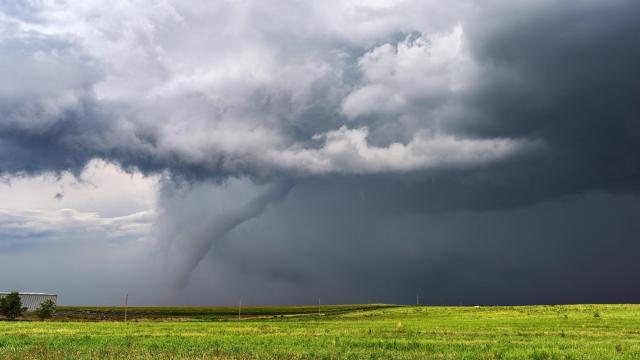Everyone has their own goals in life. For some, it’s climbing a mountain or writing a novel. For others, it’s taking a photo of extreme weather that is subsequently featured on their local weather report. The problem is, snapping a decent-quality picture of an incoming storm or cloud formation isn’t as easy as it sounds. In fact, most of the results aren’t great.
But there are ways to improve, and KXAN Austin has a few suggestions. Here are some tips for capturing all the drama of a changing sky.
Be safe
This should go without saying, but you’re not a professional storm chaser (unless you are), and your first priority should always be your safety. Also, don’t take photos or video while driving. If you encounter some interesting-looking weather while on the road, either pull over first, or have the passenger be the photographer.
Check the lighting
Like other types of photos, lighting can make or break severe weather shots. Here’s how the folks at KXAN suggest making sure your lighting is right:
To avoid this, most smartphones (if they’re on the auto settings in the camera app) allow you to tap on different areas of the screen to adjust lighting before you take a photo. Tapping on a dark area will lighten some parts of the image, and tapping on a light area will darken parts of the image. The same goes for video.
Also, avoid using the flash setting on your phone (or camera), if possible. This isn’t the time.
Keep it in focus
If your photo features something up close — like a large hailstone — be sure to take the extra second or two to focus the shot. Here’s KXAN again with a tip:
Similar to adjusting lighting, tapping on different areas of your screen in the camera app will put the areas you tap in focus. When you’re ready, tap on the subject of your photo to get your smartphone camera to hone in on it. Make sure you’re also standing as still as possible to prevent blurriness.
And if the reason you’re taking a picture of hail is that it’s unusually large in size, consider putting something else in the frame with it for scale.
Use wide shots of stormy skies
If there’s something really interesting happening in the sky — like colourful cloud patterns during sunset, or a rainbow — the temptation is to zoom allllll the way in to make it look as close as possible. But instead of resembling an image from a science textbook, these photos tend to be grainy and lower-quality. Instead, stick with wide shots.

Leave a Reply
You must be logged in to post a comment.